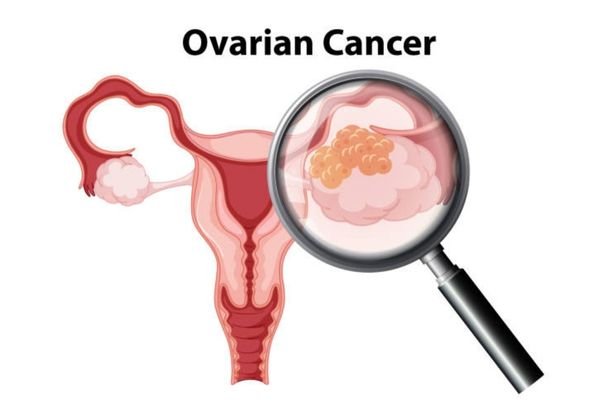Ovarian cancer treatment in India
Cost of ovarian cancer treatment in different cities in India
The cost of ovarian cancer treatment in India may vary based on numerous factors. On average, surgery cost ranges from $2,700 to $6,800, and radiation therapy costs from $5500 to $6500 for the complete treatment course.
The cost of ovarian cancer treatment in various cities of India is given below.
| City Name | Cost in USD | Cost in INR |
| Delhi | 5700 | 472071 |
| Mumbai | 5850 | 484494 |
| Kolkata | 5500 | 455507 |
| Chennia | 5600 | 463789 |
| Bangalore | 5700 | 472071 |
| Hyderabad | 5500 | 455507 |
Cost factors for ovarian cancer treatment in India
Oncologist Fees: An important factor when it comes to an ovarian cancer treatment in India is oncologist fees. Highly experienced, board-certified, skilled surgeons who are capable of delivering successful surgeries.
Type of Treatment: Mostly, the best option may include combining more than one type of treatment. Surgery, alone or combined with other treatments, may be used to treat ovarian cancers. The cost linked to each type of treatment is generally different.
Number of Chemotherapy/ Radiation Cycles: The total ovarian cancer treatment cost will depend on the number of radiation therapy and chemotherapy cycles that the patient needs to undergo. In some cases, the doctors may suggest to give more than a couple of cycles of chemotherapy and radiation therapy to destroy the cancer cells.
Surgical Facility Availed: Treatment for ovarian cancer in an accredited hospital by skilled, well-trained and qualified medical staff is an important factor. Moreover, geographical location of the chosen hospital in India also impacts the quote.
Pre and Post Treatment Costs: The pre-surgical treatment costs are associated with the cancer stage and medical condition of the patient. Hence, these will decide the number as well as type of investigations and treatment needed. Post-treatment expenses also could include follow-up consultations and prescription medication.
Cost comparison in different countries
The cost of ovarian treatment in various countries varies based on a large number of factors such as accommodation, visa costs, location, type of hospital, currency, infrastructure, etc. The cost of ovarian cancer treatment in different countries is given in the below table.
| Country Name | Cost in USD | Cost in INR |
| India | 5800 | 480285 |
| Turkey | 8850 | 732849 |
| UAE | 10000 | 828078 |
| Saudi Arabia | 23000 | 1904579 |
| Indonesia | 11000 | 910885 |
| Malaysia | 15000 | 1242117 |
Success rate of ovarian cancer treatment in India
The success rate for ovarian cancer treatment in India is around 80%. The survival of ovarian cancers vary depending on a number of factors like stage at diagnosis, age, clinical extent of disease, hormonal status and the type of treatment. The success rate for ovarian cancer treatment in India is high because of top cancer specialists, best cancer hospitals, and modern technology used.
FAQ
What is ovarian cancer?
Ovarian cancer is a cancerous growth that starts in the ovaries, the organs that make eggs in women. Although there may not be any symptoms in early stages, a person may experience pain and pressure in the lower abdomen or vaginal bleeding. When ovarian cancer symptoms appear, they are generally attributed to other common conditions. Ovarian cancer occurs in women as well as people assigned female at birth. Ovarian cancer affects the ovaries and there are several types of this cancer. When ovarian cancer is detected in early stages, treatment is most effective. Ovarian cancer shows various signs and symptoms, hence, it is crucial to pay attention to the body and be aware what is normal for you. The most common type of ovarian cancer is adenocarcinoma, while the most common subtype is adenocarcinoma, which high-grade (aggressively growing) tumour.
What are the stages of ovarian cancer?
Stage 1: Stage one is considered the least advanced stage of ovarian cancer. This means the cancer is only confined to the ovaries or the fallopian tubes. Cancer is found inside one or both ovaries.
Stage 2: Stage 2 cancer does not spread to the lymph nodes or organs in distant locations of the body, and it has reached organs near the ovaries. Cancer can be in the fallopian tubes, uterus or both, or it has spread to organs in the pelvis such as bladder, colon, and rectum.
Stage 3: The cancer in this stage invades adjacent organs such as the uterus and bladder. The cancer now reaches the stomach lining, the lymph nodes behind the belly, or both.
Stage 4: This is the most advanced stage that indicates that the cancer has spread to some distant locations. Cancer cells are found in the fluid around the lung, but this does not spread to any other areas outside the abdomen or pelvis.
What are different types of ovarian cancer?
Epithelial ovarian carcinomas: Most epithelial ovarian tumours are benign in nature. However, cancerous epithelial tumors (epithelial ovarian carcinoma) are the most common kind of ovarian cancer. In this, ovarian cancer originates in epithelial cells that cover the outer surface of your ovary. They generally spread to the lining and organs of the pelvis and abdomen first before spreading to other parts of the body, such as the lungs and liver. They might also spread to the brain, skin and bone.
Germ cell tumours: These start in the reproductive cells that are in the eggs in women. Germ cell tumours coount for less than 2% of all ovarian cancers and have a high survival rate.
Stromal cell tumours: Ovarian stromal cell tumors (also known as sex cord tumors) are less common and represent nearly 1% of all ovarian cancers. These develop from the stroma tissue cells, which produce the female hormones progesterone and estrogen.
Ovarian sarcoma: Unlike carcinoma, ovarian sarcoma tumours occur in the connective tissue of the ovarian cells. This has not been studied in depth and is likely to have a poor prognosis than other ovarian cancers. The common symptom is abdominal pain.
What are medical tests for ovarian cancer?
Ultrasound: Ultrasound uses sound waves to produce an image on a video screen. Ultrasound is generally the first test done in case an issue with the ovaries is suspected. This test can be used to detect an ovarian tumour and check if this is a solid mass or a fluid-filled cyst. Ultrasound may also be used to see the ovary to check how big it is. This helps the medical expert decide which cysts or masses are more worrisome.
CT scan: The CT scan is used to produce detailed cross-sectional images of the body. The test can tell whether ovarian cancer has spread to other body organs. CT scans don’t show small ovarian tumours properly, but they can show larger tumours, and help see if the tumour is spreading to nearby structures. A CT scan might also show enlarged lymph nodes, cancer spread to liver or any other organs, indicate signs that an ovarian cancer is affecting the kidneys or bladder.
Barium enema x-ray: This test helps see if the cancer has spread to the colon or rectum. The test is not commonly used for women with ovarian cancer and colonoscopy might be done instead.
Magnetic resonance imaging scan: MRI scans produces cross-section images of inside body parts. This test uses strong magnets to produce images. MRI scans aren’t used often to detect ovarian cancer, however, they are helpful to examine the spinal cord and brain where cancer may spread.
Positron emission tomography or PET scan: In a PET scan, radioactive glucose is used to look for the cancer. The amount of sugar taken up by body cells may be different depending on how fast these are growing. Fast growing cancer cells are more likely to absorb larger amount of the sugar compared to normal cells.
How to prevent ovarian cancer?
Maintaining a healthy weight: Obesity has been related to ovarian cancer, hence, maintaining a healthy weight is crucial to reduce both these risk factors. Maintaining a normal weight involves heaving a healthy diet and doing regular physical activity.
Following a healthy diet: The diet must include lots of wholegrains, vegetables and fruits. The consumption of red meat has been linked to cancer, so people are advised to limit eating red meat. Other sources of healthy protein include fish, poultry, and beans.
Quitting smoking: The risks for pancreatic cancer is more among smokers. Around 25%-35% of ovarian tumor is caused by smoking. Quitting smoking is necessary for a person to cut the risk of ovarian cancer.
Taking Vitamin B: Studies have revealed that vitamins reduce the risks of various cancers such as ovarian cancer. Research has discovered that the benefit is seen if the nutrients come from food.




